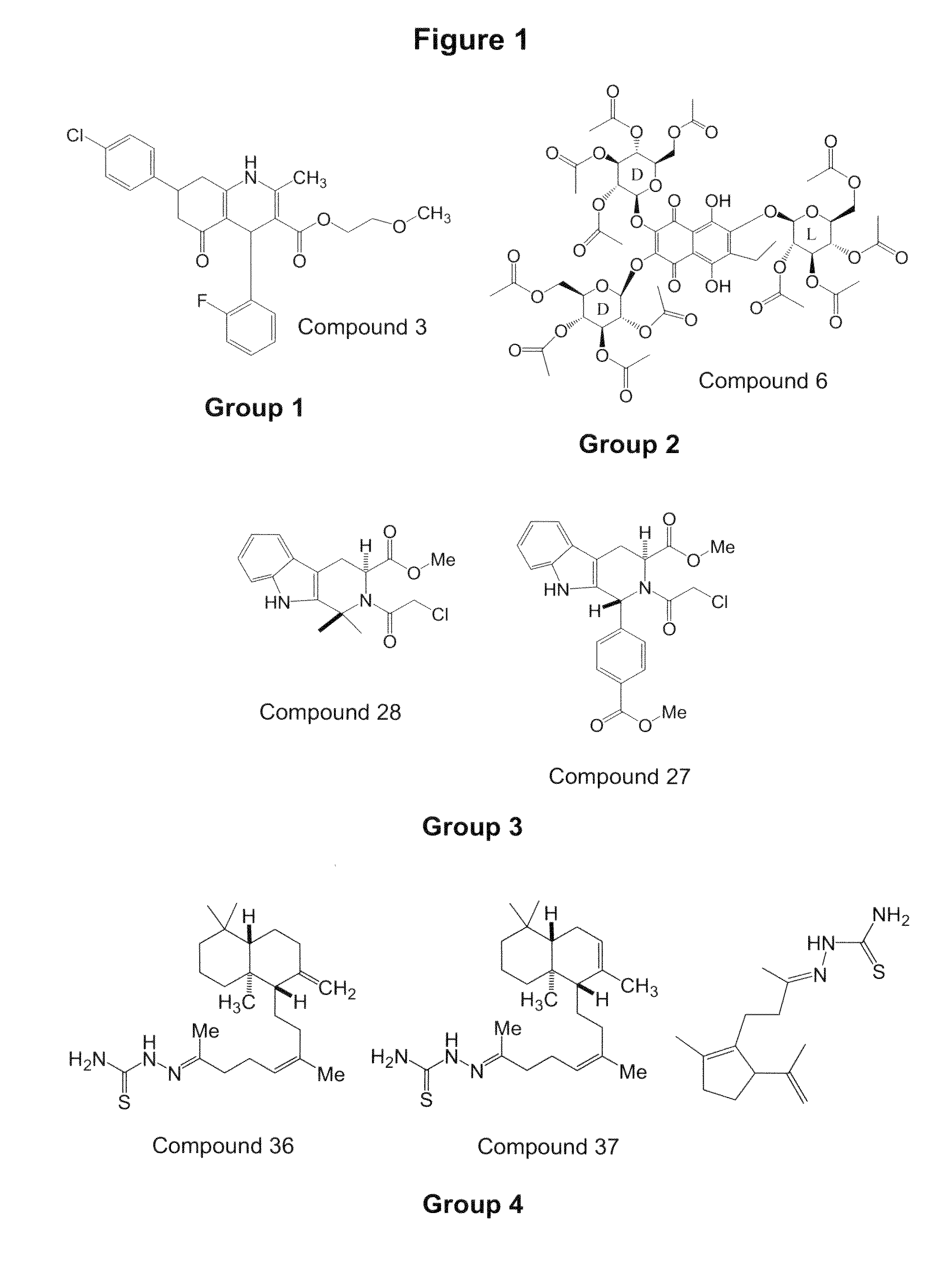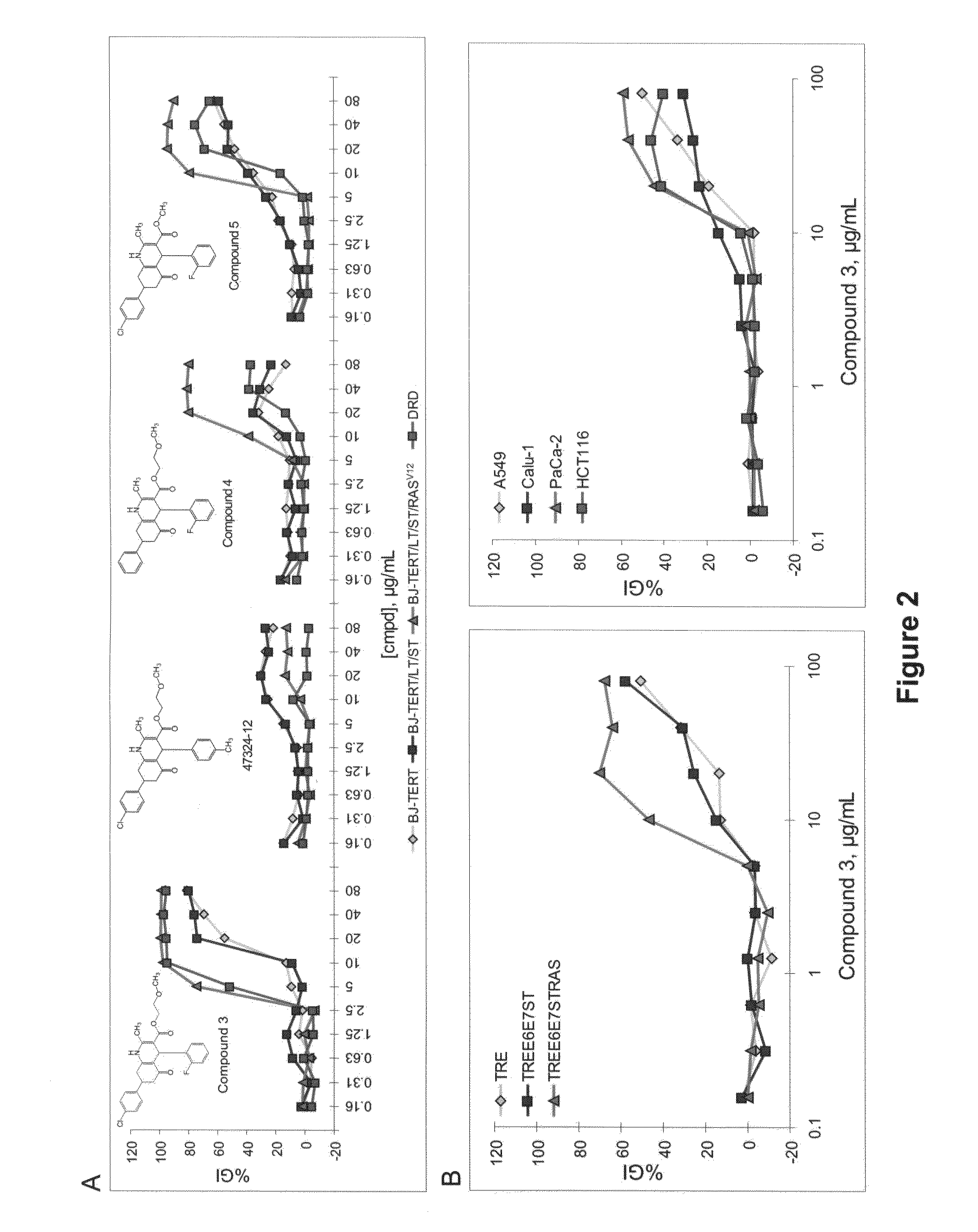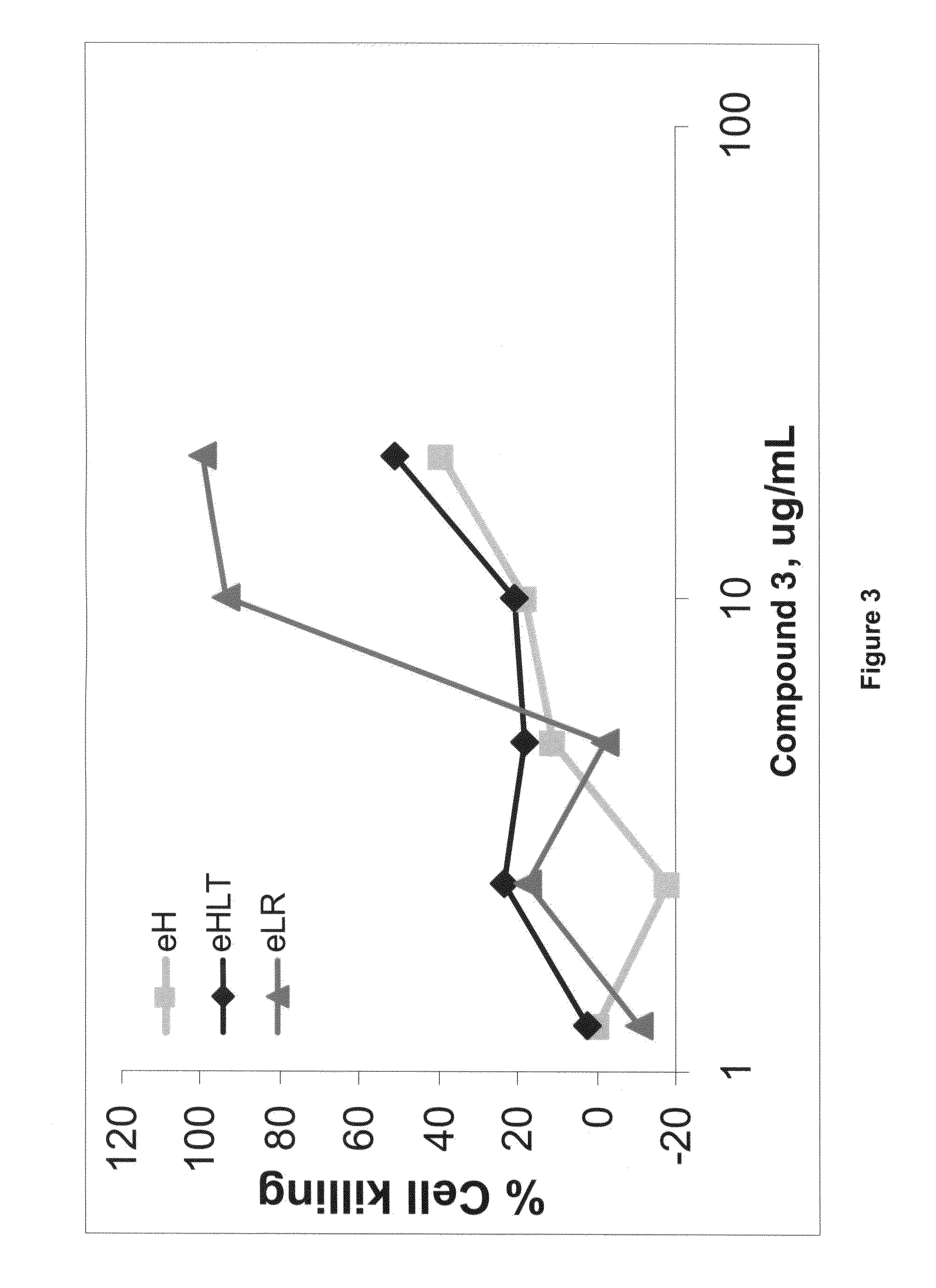Oncogenic-RAS-signal dependent lethal compounds
a technology of signal-dependent lethal compounds and compounds, applied in the field of rasselective lethal compounds and compositions, can solve the problems of not being applicable to mammalian systems, active-site inhibitors, and many proteins that cannot be targeted with enzymatic targeting, and synthetic lethal screening with small organic molecules does not provide direct information abou
- Summary
- Abstract
- Description
- Claims
- Application Information
AI Technical Summary
Problems solved by technology
Method used
Image
Examples
example 1
Materials and Methods
Cell Lines
[0393]BJ-fibroblast-derived cell lines were grown in a 4:1 mixture of DMEM to M199 supplemented with penicillin and streptomycin (pen / strep), and 15% heat-inactivated fetal bovine serum (BJ medium). TRE-fibroblast-derived cell lines and the human lung carcinoma cell line A549 were grown in DMEM supplemented with pen / strep and 10% calf serum. MS1 and SVR cells were grown in DMEM supplemented with pen / strep and 5% calf serum. The human lung carcinoma cell line Calu-1 and colon carcinoma cell line HCT116 were grown in McCoy's 5A medium supplemented with pen / strep and 10% calf serum. The human pancreas carcinoma cell line MIA PaCa-2 was maintained in DMEM supplemented with pen / strep, 10% calf serum, and 2.5% horse serum. The human fibrosarcoma cell line HT1080 was maintained in DMEM supplemented with non-essential amino acids, pen / strep, and 10% calf serum.
[0394]The BJ cell system consists of 5 isogenic cell lines that are derived from common human fibrobl...
example 2
[0478]Lack of potency and non-specific toxicity are the major hurdles in anti-cancer drug development. Traditionally, these features were not examined until the very late phase of drug development. Ideally, efforts to address the two properties should be made in early stage of drug discovery and only drug candidates that show consistent and robust activity should be put forward to improve overall efficiency.
[0479]NCI60 anti-cancer screening (“NCI60 test”) is a system that provides an opportunity to assess a drug candidate's potency and selectivity at a relatively early stage of drug discovery. The primary purpose of NCI60 anti-cancer screening is to identify lethal compounds that have significantly increased potency against some selective cancer cell lines. Such compounds would be expected to kill sensitive cancer cells while having minimal effect on healthy cells in a predetermined concentration range. NCI60 anti-cancer screening makes use of 60 cancer cell lines from different hum...
example 3
[0505]Below is a representative synthesis for compounds of formula IV. In particular, the synthesis of compound 27 is set forth below:
Synthesis of Methyl Esters of L- and D-Tryptophanes Chlorohydrates
[0506]
[0507]Thionylchloride (0.064 mol) was slowly added to a cooled (0° C.) suspension of tryptophane (0.049 mol) in methanol (150 mL). The reaction mixture was warmed up to 40° C. and stirred at this temperature for six hours. All solvents were removed and the solid residue was triturated with ether. The solid was filtered off to give the required product.
[0508]D-tryptophane (2a): yield 98%, M.p. 232-233° C. NMR1H (δ, ppm, DMSO-d6, 300 MHz): 3.39 (2H, m, CH2); 3.63 (3H, s, CH3O); 4.20 (1H, t, CH, JHH=5.5 Hz); 7.07 (2H, dt, Ar, JHH=21 Hz, 6 Hz); 7.26 (1H, d, H2, JHH=3 Hz); 7.39 (1H, d, Ar, JHH=7.8 Hz); 7.53 (1H, d, Ar, JHH=7.8 Hz). NMR13C (δ, ppm, DMSO-d6, 125.76 MHz): 26.01 (s), 52.61 (d), 106.26 (s), 111.45 (s), 117.84 (s), 118.50 (s), 121.05 (s), 124.80 (s), 126.79 (s), 136.13 (s), ...
PUM
| Property | Measurement | Unit |
|---|---|---|
| enantiomeric excess | aaaaa | aaaaa |
| enantiomeric excess | aaaaa | aaaaa |
| enantiomeric excess | aaaaa | aaaaa |
Abstract
Description
Claims
Application Information
 Login to View More
Login to View More - R&D
- Intellectual Property
- Life Sciences
- Materials
- Tech Scout
- Unparalleled Data Quality
- Higher Quality Content
- 60% Fewer Hallucinations
Browse by: Latest US Patents, China's latest patents, Technical Efficacy Thesaurus, Application Domain, Technology Topic, Popular Technical Reports.
© 2025 PatSnap. All rights reserved.Legal|Privacy policy|Modern Slavery Act Transparency Statement|Sitemap|About US| Contact US: help@patsnap.com



